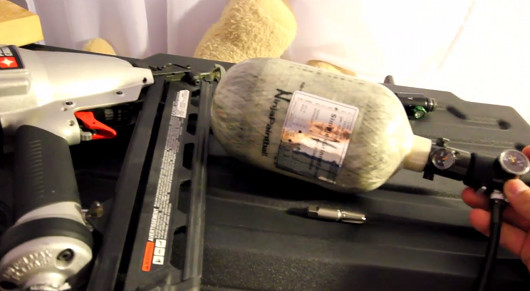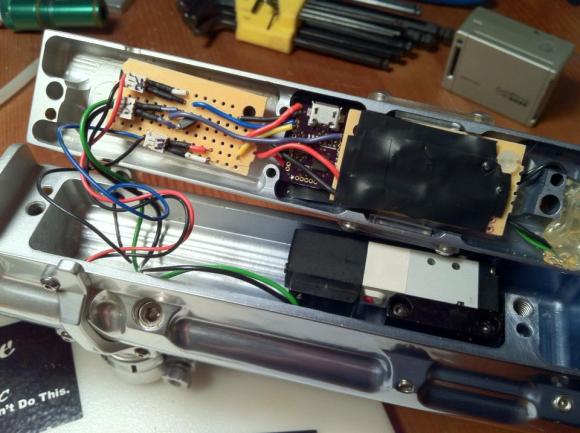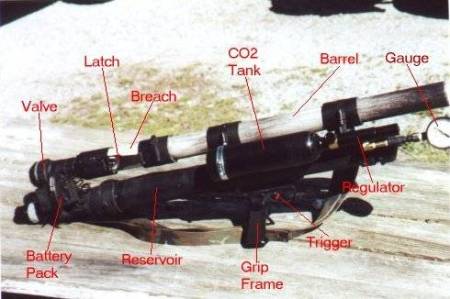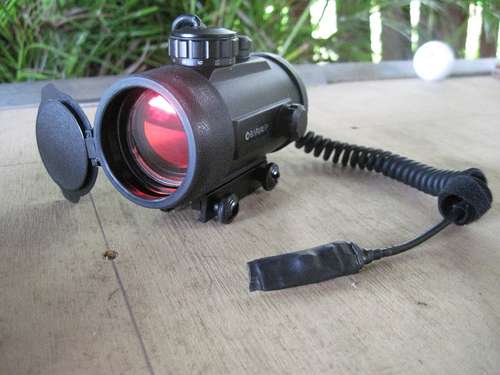If you’ve ever worked with air tools outside of a shop setting, you know that lugging the air hose around can get more and more annoying the further away you are from the compressor. [headsplosive] posted a video (embedded after the break) showing how to go mobile with your air tools.
Air tanks made for paintball are high-pressure in a tiny space, and make a very convenient energy source. In this case, [headsplosive] used a 68 cubic inch, carbon fiber wrapped tank rated at 4500psi. The normal regulator only steps that pressure down to 800psi, so he added a second regulator to hit the 120-140psi that air tools need. He then attached a ‘remote line’, or a coiled high-pressure hose, and added a standard air tool coupler at the end.
The yield is pretty impressive. With a half-charge of the tank, he managed to drive 100 two-inch nails. [headsplosive] has a scuba tank handy, and uses that to recharge the paintball tank. He estimates a scuba tank will last you about 2000 shots from a nailer, and only costs about $7.50 to recharge. Not bad at all. We can’t help but wonder how long you’d get out of an air-powered cutoff wheel, or even a hammer drill. While the parts aren’t terribly cheap unless you buy them used, it will still pay for itself in convenience if you have the need.






















